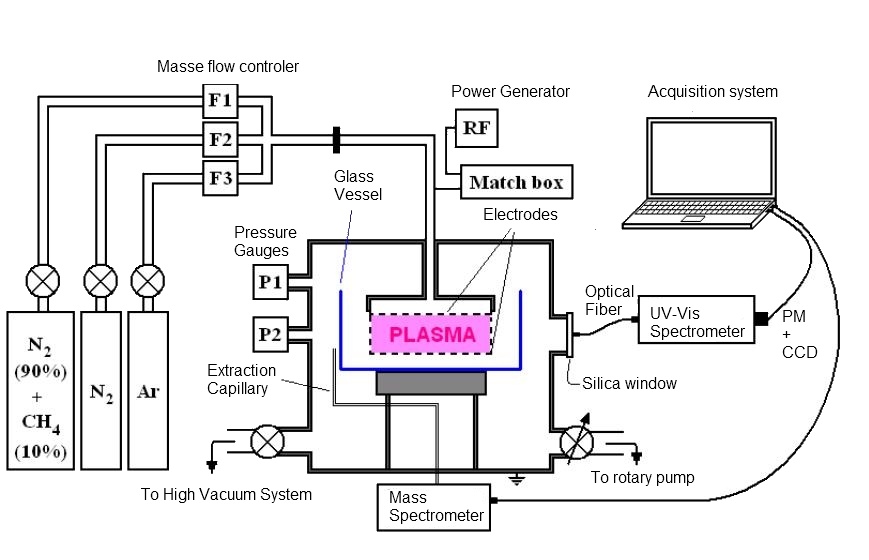The Experiment
Synthesis, production and study of Titan's Tholins equivalent thanks to Nitrogen-Methane radiofrequency dusty plasma
Organic aerosols play a significant role in the properties and evolution of Titanís atmosphere. But our knowledge of them and their physico-chemical mechanisms of formation and evolution are currently limited to a few data obtained by Titan observations from the Earth or from space probes.
For this reason, laboratory experiments are developed to simulate the atmospheric chemistry and produce analogues of these aerosols in order to understand better their properties and how they are formed. The plasma discharges are the most efficient devices for the production of such analogues. However, the existing plasmas simulations introduce experimental biases compared with the conditions of aerosols production in Titanís atmosphere: chemistry is induced by electrons instead of photons; the solid analogues are produced and deposited on solid surfaces; direct analysis of the particles inside the reactive chamber is not easy.
In order to avoid some of these experimental problems, we have developed another method of production of Titanís aerosols analogues. It is based on a capacitively coupled radio-frequency (RF) cold plasma system at low pressure in a N2ĖCH4 gaseous mixture. In this plasma, solid particles produced from the gas phase are in levitation, thus preventing any wall effect on their production, and allowing the study of the formation and growth of the particles directly in the plasma. Moreover, the electron energy distribution of this plasma can be compared with the solar spectrum.
